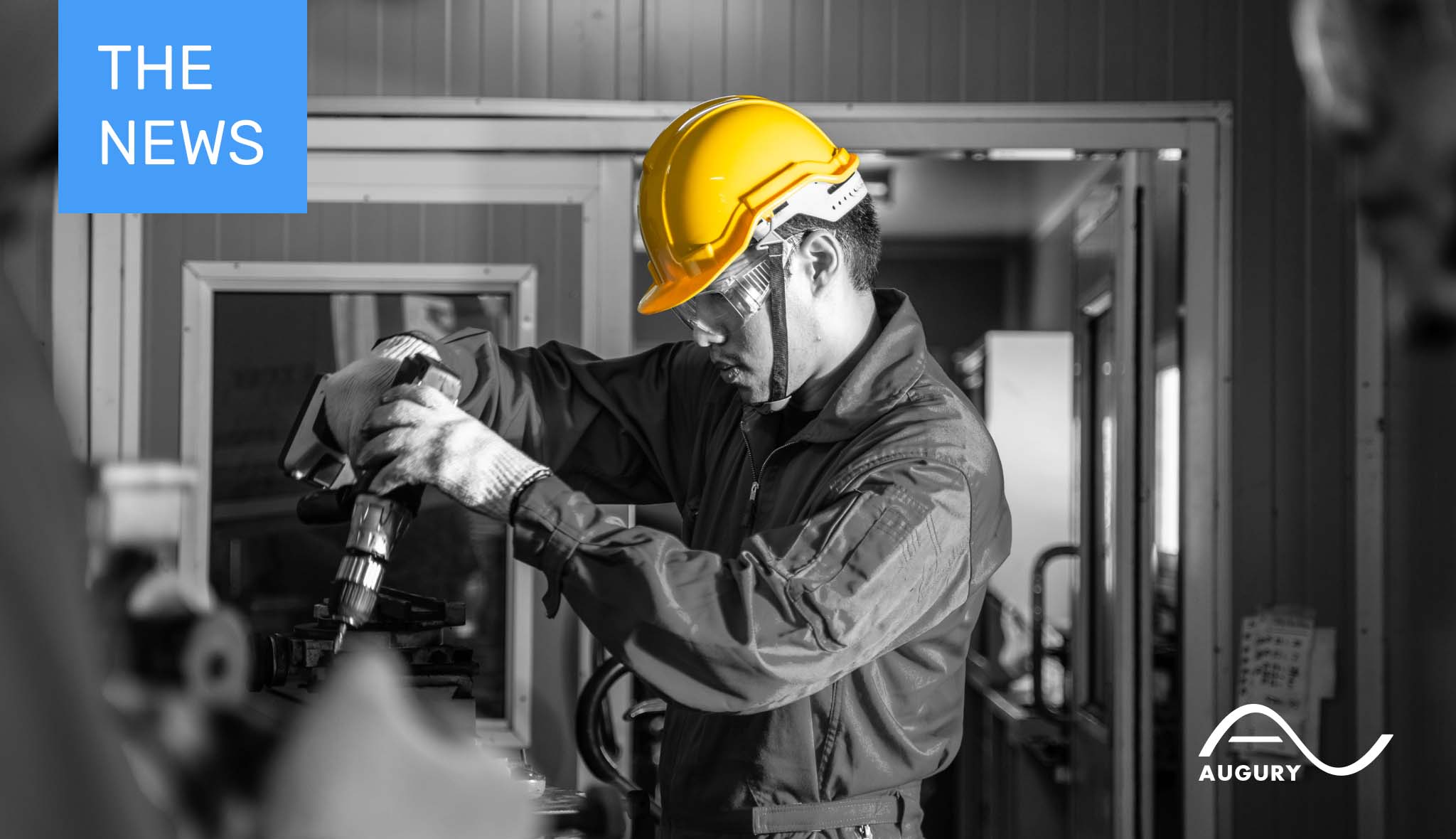
The world – and manufacturing – does not lack challenges. Happily, we’re not rolling over. In fact, there’s a lot to be optimistic about: from tear-free toilet paper to possible endless energy. Read all about it in our regular round-up of manufacturing-related news.
Stay Positive, People. It’s What We Do.
“I’ve realized why pessimism sounds smart: optimism often requires believing in unknown, unspecified future breakthroughs – which seems fanciful and naive. If you very soberly, wisely, prudently stick to the known and the proven, you will necessarily be pessimistic,” according to ‘Why Optimism Isn’t As Crazy As It Sounds’, an opinion piece that’s been happily bouncing around social media the last year.
The article makes a solid case for putting your money on the unknown. “No proven resources or technologies can sustain economic growth. The status quo will plateau. To expect growth is to believe in future technologies. To expect very long-term growth is to believe in science fiction.”
“No known solutions can solve our hardest problems – that’s why they’re the hardest ones. And by the nature of problem-solving, we are aware of many problems before we are aware of their solutions. So there will always be a frontier of problems we don’t yet know how to solve.”
Certainly, new ideas and resources continually save us from ourselves – like how, for example, “plastic saved the elephants by replacing ivory”.
“Focusing only on established sectors and proven fields thus naturally leads to pessimism. To be an optimist, you have to believe that at least some current wild-eyed speculation will come true.” However, you must also believe progress is “driven fundamentally by human choice and effort – that is, by human agency.”
Wild-Eyed Speculation Bearing Fruit
Certainly, there are lots of “wild-eyed” stories out there. Just look at what’s happening around generative AI. But that’s a story that’s largely still being written.
However, more old-school AI is already delivering valuable benefits. For instance, DeepMind, who already transformed the Life Sciences with protein structure database AlphaFold, is now transforming the Material Sciences by releasing a database with hundreds of thousands of potential new materials, according to ‘Materials-Predicting AI From DeepMind Could Revolutionize Electronics, Batteries, And Solar Cells’.
“Nature continues to inspire. We had the bird, the gecko, and the shark. Now we have the spider-silkworm. What new secrets will we unravel in the future?”
All Natural
Meanwhile, scientists are “evolving the crap out of an enzyme” that can break down plastic in a bid to scale its abilities so it can take on our waste crisis, according to ‘‘We Are Just Getting Started’: The Plastic-Eating Bacteria That Could Change The World’.
Many others are also looking at nature for ideas on how to solve our problems. “Today, biomimetics is everywhere. Shark-inspired swimming trunks, gecko-inspired adhesives, and lotus-inspired water-repellents are all taken from observing the natural world. After millions of years of evolution, nature has quite a few tricks up its sleeve. They are tricks we can learn from. And now, thanks to some spider DNA and clever genetic engineering, we have another one to add to the list,” according to ‘Adding Spider DNA To Silkworms Creates Silk Stronger Than Kevlar’.
“Nature continues to inspire. We had the bird, the gecko, and the shark. Now we have the spider-silkworm. What new secrets will we unravel in the future? And in what exciting ways will it change the world?”
The Wild-Eyed Future Is Now
Meanwhile, there are plenty of “future” technologies that may be finally coming of age. For example, the long up-and-coming graphene is now altering “the way everything from mobile phones and computers to electric cars, healthcare and military equipment is manufactured,” according to ‘Graphene Will Change The World’: The Boss Using The “Supermaterial” In The Global Microchip War’.
And as one of the strongest and thinnest conductible materials in the world, it’s also deemed perfect to allow us to collaborate more closely with our microchips, according to ‘Carbon-Based Sensors Are Poised To Facilitate A Seamless Human-Machine Interface’.
“But yes, it’s tricky capturing a thermonuclear bomb in a gas tank.”
Then there’s a matter of nuclear fusion – renown for “always being 30 years away.”
“Fusion power could change the world. If it worked, it would grant humanity eye-watering quantities of electricity without producing any greenhouse gas emissions. The warming of the planet would slow, environmental pollution would drop, and energy would be cheaper than ever,” according to ‘Companies Say They’re Closing In On Nuclear Fusion As An Energy Source. Will It Work?’
Sounds nice, doesn’t it? But yes, it’s tricky capturing a thermonuclear bomb in a gas tank. However, now there’s room for cautious optimism as many companies are approaching the problem using many different methodologies – and backed by massive amounts of private and government investment.
And in other explosive news: ‘For the First Time in 100 years, Charmin is Reinventing the Square for the Perfect Tear’. And like nuclear fusion, this innovation was a long time coming: this next-level toilet paper took over five years of R&D to achieve…
Accelerating Workforce Revolution
Manufacturing is also witnessing the arrival of some potentially game-changing solutions to its endemic challenges. For instance, how do we scale passing on the knowledge to a new generation of workers? And how do we find these workers?
One no-brainer: “Apprenticeships can be a powerful mechanism for unlocking worker potential and bridging the gap between workers yearning for opportunity and businesses starving for talent,” according to ‘70% Of The US Workforce Could Benefit From Apprenticeships. Why Aren’t More People Interested?’.
“Notably, women and Black and Hispanic workers without degrees are disproportionately represented in high-churn, low-wage jobs — providing employers ample opportunity to expand the diversity of their workforces while also filling key roles, the report said.”
Now that’s what you call: win-win.
“What more impact could a person have on a number of people that work for them than giving them 50 holiday days a year, a three-day weekend every weekend.”
Here’s To Believing In The Life/Work Balance!
Then there’s this less intuitive scenario: ‘A Manufacturer Tried The 4-Day Workweek For 5 Days’ Pay And Won’t Go Back’.
“The goal is not to do less with less but to maintain 100% productivity by bringing more energy and efficiency to the workplace, while lessening fatigue and burnout,” notes the manufacturer. “Think about it. What more impact could a person have on a number of people that work for them than giving them 50 holiday days a year, a three-day weekend every weekend. It just seemed like the most significant thing I could do as a business owner and manager.”
All it took was a “tolerance for risk, and also trust, creativity and open mindedness.”
In other words (and as mentioned above): it’s down to us.
So, let’s raise a glass to a very optimistic – and problem-busting – 2024.






